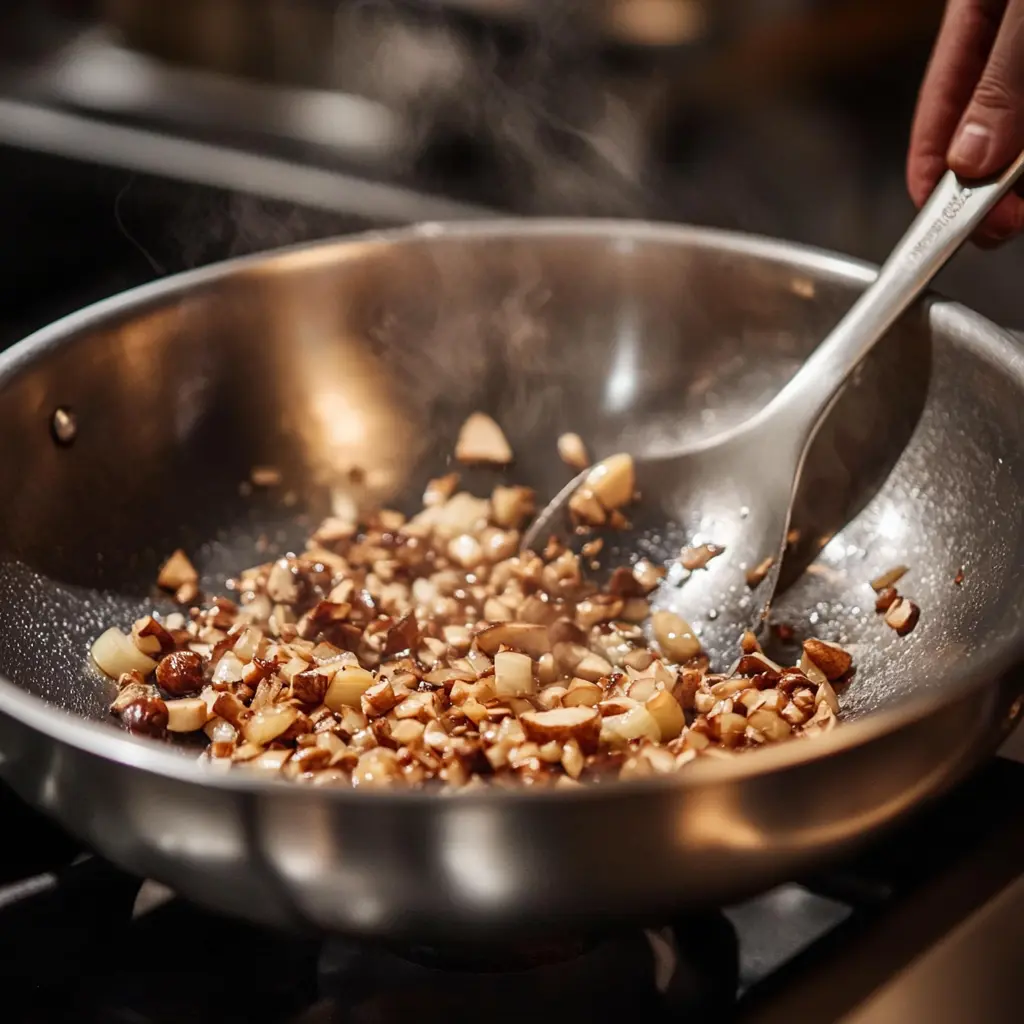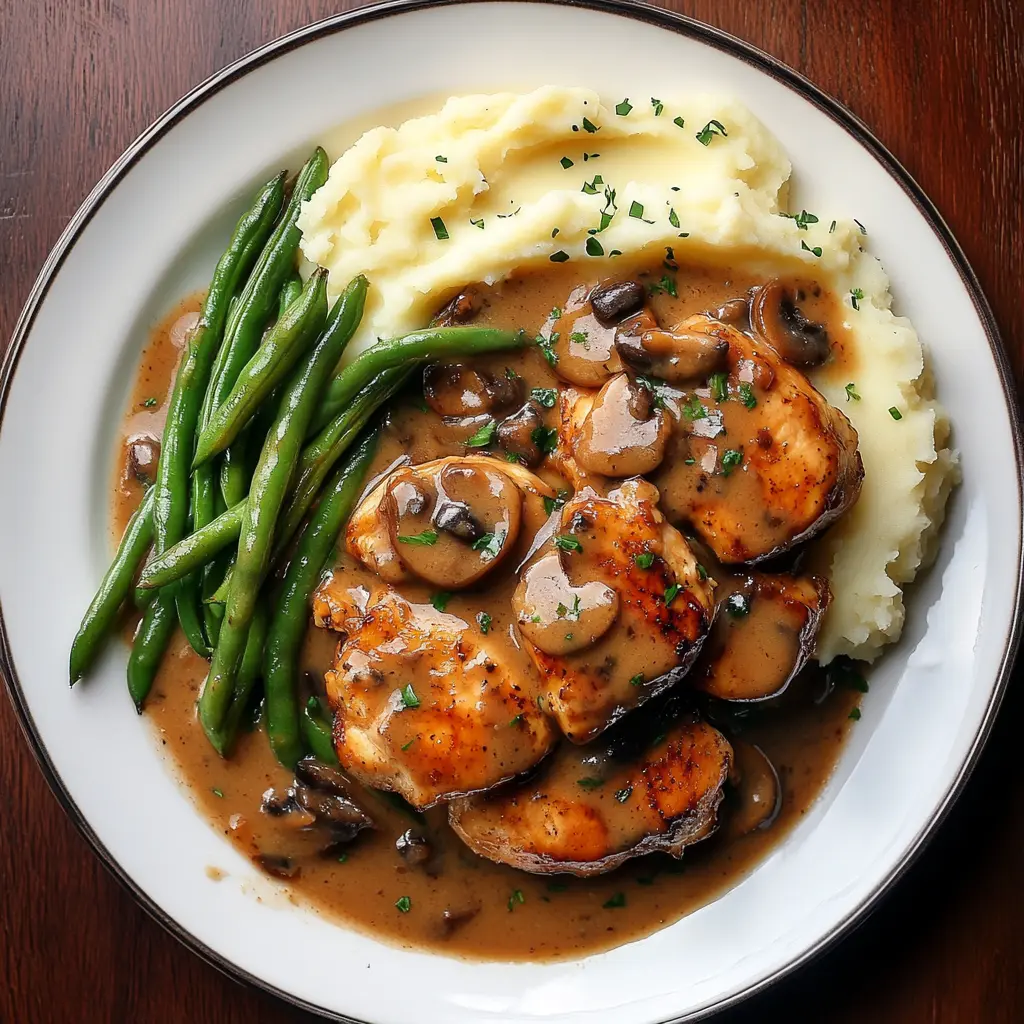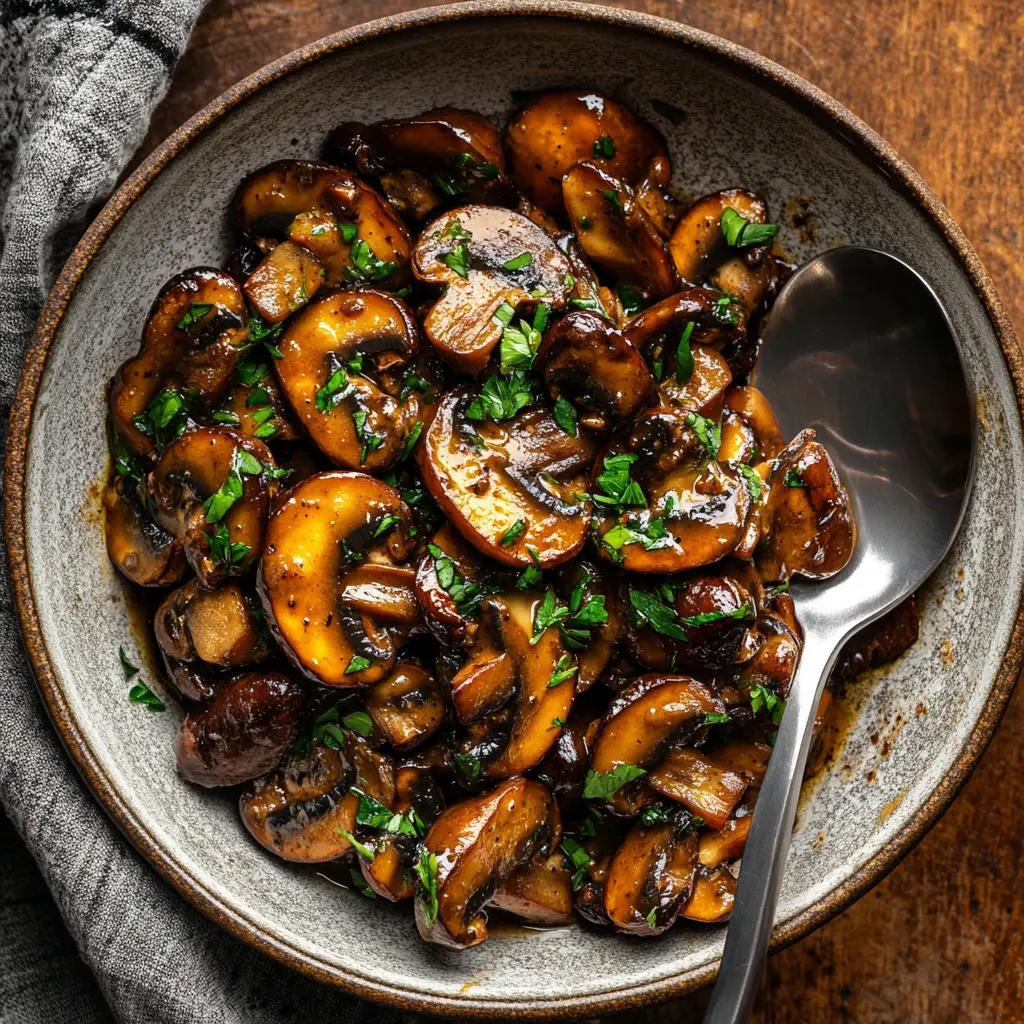Introduction
Marsala sauce is one of the crown jewels of Italian cuisine, celebrated for its rich, creamy texture and a delightful balance of savory and sweet flavors. Whether you’re crafting an unforgettable dinner or exploring classic Italian recipes, Marsala sauce has an undeniable charm. This article dives deep into the essential elements that make this sauce so special, exploring its ingredients, variations, and culinary applications. Now, let’s get started with the history and origin of this versatile sauce.
Part 1: Understanding Marsala Sauce
Origin and History of Marsala Sauce
The Birthplace: Marsala, Sicily
Marsala sauce traces its roots to the quaint town of Marsala, nestled in Sicily’s picturesque landscape. Known for its rich culinary traditions, this charming region provided the perfect setting for the creation of such a flavorful delight. Over the centuries, Sicilian cooks embraced local ingredients and techniques, paving the way for this sauce’s unique profile.
Evolution Through the Centuries
Marsala sauce didn’t remain static; it evolved with cultural exchanges and modern culinary innovations. What began as a simple accompaniment has now transformed into a versatile base for countless dishes, from hearty meals to vegetarian delights. With every adaptation, it continues to celebrate the essence of Sicilian cooking.
Part 2: Core Ingredients of Marsala Sauce
Key Components of Traditional Marsala Sauce
Marsala sauce owes its distinctive flavor and texture to a harmonious blend of carefully chosen ingredients. Each component plays a vital role, enhancing the sauce’s depth and making it a culinary masterpiece. Let’s break down what makes this sauce so special.

Aromatics: Shallots and Garlic
No savory sauce is complete without aromatics, and Marsala sauce is no exception. Shallots and garlic serve as the foundation, delivering a delicate yet unmistakable aroma. Shallots, with their mild sweetness, perfectly balance the bold and slightly pungent garlic, creating a symphony of flavors that entice your taste buds from the first whiff.
- Shallots add subtle sweetness and complexity.
- Garlic provides a robust, earthy undertone that enhances the sauce’s richness.
To unlock their full potential, these aromatics are typically sautéed until golden, releasing their natural sweetness and melding beautifully with the other ingredients.
Mushrooms: Adding Earthiness
One of the most recognizable features of Marsala sauce is its earthy depth, brought to life by mushrooms. These versatile fungi not only enhance the sauce’s texture but also contribute umami, the “fifth taste” that adds savory notes.
- Common mushroom choices include cremini, button, and portobello.
- Thinly sliced mushrooms ensure they absorb the surrounding flavors, blending seamlessly into the sauce.
By cooking the mushrooms until tender, you ensure they release their juices, which meld into the sauce, deepening its complexity.
Broth: The Flavor Base
Broth serves as the liquid backbone of Marsala sauce, delivering depth and balancing the richness of other ingredients. Whether you’re going for a robust base with beef broth or a lighter touch with chicken broth, this component ensures the sauce retains its balance of savory and subtle flavors.
- Chicken broth offers a lighter, slightly sweet undertone.
- Vegetable broth works well for vegetarian adaptations.
- A reduced broth thickens the sauce while intensifying the flavors.
Choosing the right broth can dramatically alter the flavor profile, giving you creative freedom to tailor the sauce to your liking.
Butter and Cream: For Richness
The luscious texture of Marsala sauce is undeniably due to the addition of butter and cream. These ingredients lend a velvety smoothness, ensuring the sauce coats every bite of your dish.
- Butter enriches the sauce, adding both flavor and sheen.
- Cream creates the signature velvety texture, making the sauce indulgent.
The trick to achieving the ideal consistency lies in timing; adding the cream near the end prevents it from curdling, while the butter is whisked in off the heat to retain its silky finish.
Herbs and Seasonings: Elevating the Flavor
To tie all the flavors together, Marsala sauce incorporates a medley of herbs and spices. Fresh parsley or thyme often makes an appearance, brightening the sauce and complementing its richness. A pinch of salt and a sprinkle of black pepper are essential to round out the taste.
- Fresh parsley adds brightness.
- Thyme or oregano lends a subtle herbal note.
- Black pepper provides a gentle kick, balancing the creaminess.
The careful combination of these ingredients results in a sauce that’s both comforting and sophisticated.
Part 3: Variations and Dietary Considerations
Marsala sauce has charmed its way into kitchens around the world, but not all recipes look the same. Variations abound, allowing cooks to adapt this classic to suit dietary restrictions, flavor preferences, and regional twists. From vegetarian spins to non-alcoholic options, here’s how Marsala sauce can be customized without losing its signature taste.
Vegetarian and Vegan Alternatives
While traditional Marsala sauce often includes ingredients like butter and cream, there are plenty of ways to make it suitable for vegetarians and vegans. These adaptations retain the rich, creamy texture and robust flavor that defines the sauce.
- Vegetarian Adjustments: Replace meat-based broths with vegetable broth, which offers a lighter flavor while maintaining depth. Adding extra mushrooms can also intensify the umami notes, compensating for the absence of animal-based fats.
- Vegan Transformations: Replace butter with plant-based margarine or olive oil for richness. Cream can be swapped with coconut cream, cashew cream, or even unsweetened almond milk for a dairy-free option. Opt for nutritional yeast to mimic the cheesy undertones.
These alternatives allow more people to enjoy Marsala sauce while staying true to their dietary choices.
Gluten-Free Modifications
For those avoiding gluten, Marsala sauce is relatively easy to adapt. Traditional recipes sometimes use flour as a thickener, but gluten-free options can achieve the same result without compromising texture or taste.
- Use gluten-free all-purpose flour or cornstarch as a thickening agent.
- Opt for arrowroot powder for a slightly lighter, glossy consistency.
When making gluten-free Marsala sauce, ensure that all other ingredients, such as broths or cream substitutes, are certified gluten-free. This ensures a safe and delicious experience for those with gluten sensitivities.
Non-Alcoholic Versions
If you’re looking to avoid alcohol, you don’t have to miss out on the deliciousness of Marsala sauce. Non-alcoholic adaptations are simple and just as flavorful with clever substitutions.
- Grape Juice Substitute: Use white grape juice or apple juice with a splash of vinegar to mimic the sweetness and acidity typically provided by traditional ingredients.
- Broth-Enhanced Depth: Enhance the sauce with a rich vegetable or mushroom broth to bring out deeper flavors.
These options maintain the integrity of the sauce’s flavor profile, ensuring it remains versatile and indulgent without the inclusion of alcohol-based ingredients.
Regional Variations
Marsala sauce, though rooted in Sicilian tradition, has been adapted across regions, resulting in delightful twists that highlight local preferences and ingredients. Let’s explore a few of these:
- Northern Italian Style: Often lighter and less creamy, this variation may skip the cream entirely, relying on broth and aromatics to create a delicate sauce.
- Southern Italian Twist: This style leans into the richness of butter and cream, often incorporating additional herbs like oregano for a robust flavor.
By understanding these variations, you can create a Marsala sauce that reflects your preferred style or region.
The Art of Customization
Enhancing Flavor Profiles
Marsala sauce is a canvas for creativity, and small tweaks can elevate its flavor. Consider these tips to enhance your next batch:
- For a smoky undertone: Add roasted red peppers or smoked paprika.
- To brighten the dish: Squeeze a bit of fresh lemon juice at the end.
- For added texture: Toss in sautéed spinach, caramelized onions, or sun-dried tomatoes.
Each addition brings a new dimension to the sauce, making it more versatile than ever.
Dietary-Friendly Pairings
Once you’ve customized Marsala sauce to meet specific dietary needs, pair it thoughtfully with complementary dishes. Here are some ideas:
- Vegan Marsala pairs beautifully with roasted vegetables or tofu steaks.
- Gluten-free Marsala sauce is an excellent match for grilled chicken or gluten-free pasta.
- Non-alcoholic versions work well with lentil loaf, steamed broccoli, or mashed potatoes.
By thinking about the dish as a whole, you can create meals that feel cohesive and satisfying, regardless of dietary restrictions.
Why Marsala Sauce Is So Adaptable
One of the greatest strengths of Marsala sauce is its adaptability. Whether you’re vegan, gluten-free, or simply experimenting with new flavors, it welcomes change without losing its core identity. The balance of creamy textures, earthy undertones, and savory-sweet notes ensures it remains a culinary favorite for cooks around the globe.
With these customizations, Marsala sauce becomes a recipe that anyone can enjoy—tailored to their tastes, preferences, or restrictions. In the next part, we’ll explore how this versatile sauce can elevate a wide range of dishes, from classic recipes to modern innovations. Stay tuned!
Part 4: Culinary Applications of Marsala Sauce
Marsala sauce is more than just a flavorful addition to your plate—it’s a transformative element that elevates a wide range of dishes. From traditional recipes to modern interpretations, this sauce has a way of complementing diverse ingredients, making every bite unforgettable. Let’s dive into how you can use Marsala sauce in your cooking and the dishes that pair best with it.
Classic Dishes Featuring Marsala Sauce

Chicken Marsala
One of the most famous dishes featuring Marsala sauce is chicken Marsala. Tender chicken breasts are lightly seared until golden, then simmered in the sauce, allowing the flavors to meld beautifully. The result is a rich, savory dish that pairs perfectly with creamy mashed potatoes or buttery pasta.
- For extra flavor, add caramelized onions or fresh parsley as garnish.
- Serve with sautéed green beans for a balanced meal.
Chicken Marsala is a crowd-pleaser, ideal for both weeknight dinners and special occasions.
Veal Marsala
Veal Marsala is another classic, showcasing the sauce’s ability to enhance delicate cuts of meat. Thin veal cutlets are cooked gently in Marsala sauce, creating a tender and luxurious dish.
- Pair with roasted asparagus or herbed rice for a complete meal.
- For added richness, include a splash of cream at the end.
This dish epitomizes the elegance of Italian cuisine, perfect for impressing dinner guests.
Pairing Marsala Sauce with Proteins
Marsala sauce is incredibly versatile and pairs well with a variety of proteins beyond chicken and veal. Here are some ideas to expand your repertoire:
- Seafood: Use Marsala sauce to glaze seared scallops or salmon. The creamy texture complements the natural sweetness of seafood.
- Pork: Pork chops or tenderloin benefit from the rich, earthy flavors of the sauce. Add rosemary for an aromatic touch.
- Beef: Pour Marsala sauce over a perfectly cooked steak or beef medallions for a decadent twist.
When paired with these proteins, Marsala sauce elevates the dish, turning a simple meal into a gourmet experience.
Incorporating Marsala Sauce in Vegetarian Dishes
Marsala sauce isn’t just for meat—it’s also a fantastic addition to vegetarian dishes. Its rich flavors provide a satisfying depth that complements plant-based ingredients beautifully.
- Pasta: Toss Marsala sauce with fettuccine, sautéed mushrooms, and spinach for a creamy vegetarian pasta dish.
- Grain Bowls: Drizzle the sauce over quinoa or farro, topped with roasted vegetables like zucchini, eggplant, or bell peppers.
- Stuffed Vegetables: Use Marsala sauce as a topping for stuffed bell peppers or portobello mushrooms.
These options showcase the sauce’s ability to shine in vegetarian cooking, offering hearty and delicious meal ideas.
Serving Suggestions and Accompaniments
While Marsala sauce is undoubtedly the star of the show, the right accompaniments can make your dish even more memorable. Here’s how to create a well-rounded meal:
- Starches: Serve Marsala sauce over creamy polenta, mashed potatoes, or a bed of rice to soak up the flavorful sauce.
- Pasta: Marsala sauce works wonderfully with wide noodles like pappardelle or tagliatelle, allowing every strand to be coated in the sauce.
- Vegetables: Roasted vegetables such as Brussels sprouts, carrots, or green beans bring brightness and texture to the dish.
- Bread: Don’t forget a crusty loaf of Italian bread for dipping—it’s the perfect way to savor every last drop.
By pairing Marsala sauce with these sides, you create a balanced meal that highlights the sauce’s versatility.
Why Marsala Sauce Is a Culinary Staple
What makes Marsala sauce such a beloved element in cooking is its adaptability. Whether used as a glaze for proteins, a creamy base for pasta, or a topping for vegetables, it brings a depth of flavor that enhances any dish. Its ability to blend with various ingredients while maintaining its distinct identity makes it a go-to choice for home cooks and professional chefs alike.
Now that we’ve explored its many culinary applications, it’s easy to see why Marsala sauce remains a timeless favorite. Up next, we’ll address common questions about this versatile sauce to round out your knowledge!
FAQs About Marsala Sauce
Marsala sauce is a beloved culinary creation, but it often raises questions for those exploring its uses and preparation. Below, we address some of the most common inquiries, ensuring you have all the information needed to master this versatile sauce.
What are the main ingredients in Marsala sauce?
Marsala sauce is traditionally made with a blend of shallots, garlic, mushrooms, broth, butter, and cream. These ingredients combine to create a rich, flavorful sauce perfect for pairing with various dishes. The addition of herbs like parsley or thyme enhances its complexity.
Can Marsala sauce be made without alcohol?
Yes, Marsala sauce can be made without alcohol. Substitutes such as white grape juice, apple juice with a splash of vinegar, or even rich vegetable broth can mimic the sweetness and depth typically associated with its classic preparation. These alternatives ensure a flavorful sauce without the inclusion of alcohol.
Is Marsala sauce vegetarian or vegan?
While traditional Marsala sauce is not vegan due to the use of butter and cream, it can easily be adapted. For vegetarians, replacing meat-based broth with vegetable broth is sufficient. For a vegan version, swap butter for plant-based margarine or olive oil and use dairy-free alternatives like coconut cream or cashew cream.
What does Marsala sauce taste like?
Marsala sauce has a unique flavor profile, balancing savory and sweet notes. The earthy mushrooms, aromatic garlic and shallots, and creamy texture create a harmonious blend, making it a rich and indulgent addition to dishes.
How do you thicken Marsala sauce?
Marsala sauce can be thickened in several ways. The most common method is to let the sauce simmer until it reduces, naturally thickening as the liquid evaporates. Alternatively, a small amount of cornstarch or gluten-free flour can be whisked in for a quicker thickening process.
What dishes pair well with Marsala sauce?
Marsala sauce is incredibly versatile and pairs well with various dishes. Classic pairings include chicken, veal, and pasta. It also complements seafood, roasted vegetables, and even vegetarian dishes like stuffed mushrooms or grain bowls. The creamy, savory sauce enhances the flavors of any dish it accompanies.
Can I freeze Marsala sauce?
Yes, Marsala sauce can be frozen for future use. Store it in an airtight container, leaving some space for expansion, and freeze for up to three months. Thaw it in the refrigerator overnight and reheat gently on the stove, adding a splash of broth or cream to restore its original consistency.
What is a good substitute for mushrooms in Marsala sauce?
If mushrooms aren’t your preference or you’re cooking for someone with allergies, consider using caramelized onions, roasted eggplant, or sun-dried tomatoes. These alternatives provide a similar depth and richness without overpowering the sauce.
Marsala sauce truly shines when its versatility meets creativity. With these FAQs, you’re equipped with the knowledge to adapt and perfect this beloved sauce. All that’s left is to let your culinary imagination run wild!
Conclusion
Marsala sauce is a timeless staple in the culinary world, cherished for its rich flavors, creamy texture, and adaptability. Whether you’re recreating classic recipes like chicken Marsala, experimenting with vegetarian options, or tailoring the sauce for dietary needs, its versatility ensures it fits into any meal effortlessly. Now that you’ve explored its ingredients, variations, and applications, it’s time to bring this delightful sauce into your kitchen and elevate your cooking to new heights!

